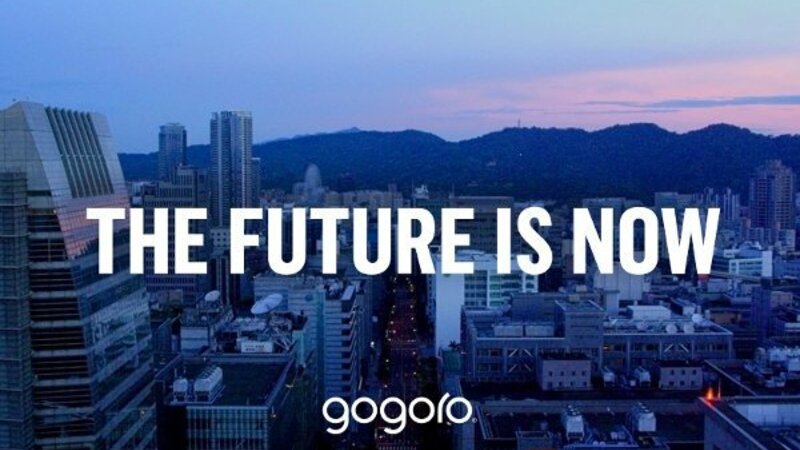TAIPEI: With over 200 GoStations and a recent expansion into the larger central city of Taichung, we are committed to growing the Gogoro Energy Network and our community of riders, evolving our products to meet the needs of our customers as we learn from them. This is all part of our vision of powering positive change for a better way forward.
Yesterday marked another milestone in the evolution of the Smartscooter: the release of our Seat Extender, which created a frenzy of orders when it launched, selling out in minutes.
Chief Design Director Walter Wang started at Gogoro in 2011 as employee number 8 and lives and breathes Gogoro’s company philosophy: to re-imagine product design from the ground up. Gogoro sat down with Walter to walk through what made this product release so special.
Gogoro x Walter Wang
Gogoro: Walter, thanks for taking the time today. We’re curious: of all the things to design, why a seat extender?
Walter Wang: The story starts back in August 2015 with the release of the Smartscooter to the consumer market. We were eager to get feedback from every test rider and new owner through questionnaires. In the first two months, the data began showing a clear reaction to the seat size: it was too small. The initial design focused on the getting as much range out of the battery as possible in urban settings, and as more feedback began to come in, we realized we needed to accommodate our customers. We began planning right away.
We initially thought we would extend the seat cushion itself into a double seat, as that was the most most agile and convenient way to provide comfort to a second passenger. But this also meant other adjustments in the use of foam, the chassis, and the scooter’s floor. We reviewed and built test an array of models and sample designs, but none held up as satisfactory. The visual of the seat and the shape of the Smartscooter’s design just didn’t match up.
Then, in an internal brainstorming session, I suddenly had an idea: “Why focus on just the cushion itself?" We zeroed back in on the original proposition: (1) expand the space of the seat for a second passenger to sit comfortably, (2) allow for the second passenger to have a sense of security when seated, and (3) be able to install the extender easily. These were the three most important things.
When Gogoro designs products, "people" are at the center of our thinking, but a "person" is always the most complex to analyze simply because each “person has unique preferences. We’ve joked internally that when couples ride together, the Smartscooter’s design allows for them to “get close,” but in reality, we didn’t take into account their relationship when we designed it.
Gogoro: So will the elongated seat impact the these relationships?
Walter Wang: Gogoro owners are thousands of very unique human beings, and we are constantly designing and developing accessories to meet their varied individual needs. When there is demand, Gogoro must deliver. It's a bit like dancing the Tango - moving forward and backward, coordinating between conciliation, and seeking as much balance as possible. In dance, you are constantly shifting balance, so you must listen to the music to make calculated steps and bring the balance back.
Gogoro: What was the most difficult thing you encountered when designing the seat extender?
Walter Wang: “Not violating the principles of the original body design” would be the expected answer here. However, we didn’t touch the body shape or function so there is no conflict with our original design. Instead, we designed the extender to be a rounded, cushioned add-on. When installed, this sits a bit higher than the original seat so the rear passenger is incapable of slipping backwards. If we had designed this as a back rest, it wouldn’t have just significantly reduced the beauty of the design, but a leaning rear seat passenger would become completely dependant on the add-on, and they may even try and store their mobile phone in the rest. This is actually a substantial increase in the potential risk of accident.
Gogoro: A lot of our owners have asked if the seat extender is related to the front rack accessory, as they look so similar. Was it designed with this in mind?
Walter Wang: Yes, this is indeed a series, and Gogoro will continue to release other accessories that will nicely integrate into this. As mentioned, Gogoro attaches great importance to "people” who each have their own preferences for accessories, and we want to give our consumers more room for imagination.
In terms of design language, the extended seat is designed as a "capsule," which echoes the original design of the rear lights. No matter how you look at it - front, back or bird’s eye view, the shapes are parallel to each other. Horace (Luke, Gogoro CEO and Co-Founder) strongly believes that design aesthetics can change lives and that we have to find ways to break through.
Gogoro: You had data informing the design of the seat extender for months. How come it took some time to release this accessory?
Walter Wang: In my opinion, we have been very innovative. First, most part vendors would not have been able to release something like the seat extender in this time frame as there is a relatively long proofing time in manufacturing. Second, testing the strength of a design is very demanding and we take safety regulations and load testing extremely seriously before entering the market. We are in a time when the market is highly competitive and therefore our customers expect the best in innovation.
In 2015, Gogoro threw a big rock into the pond, creating a lot of ripples. We must remain in our ambitious state, continuing to stimulate the market's imagination and innovate as we listen to our customers’ feedback.
Gogoro: Thank you, Walter.
Walter Wang: Thank you.






